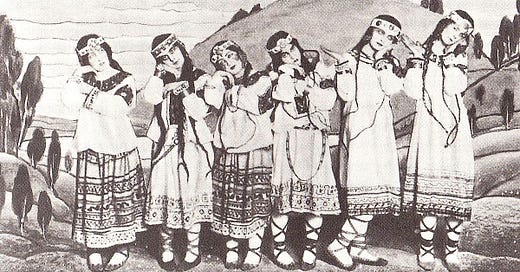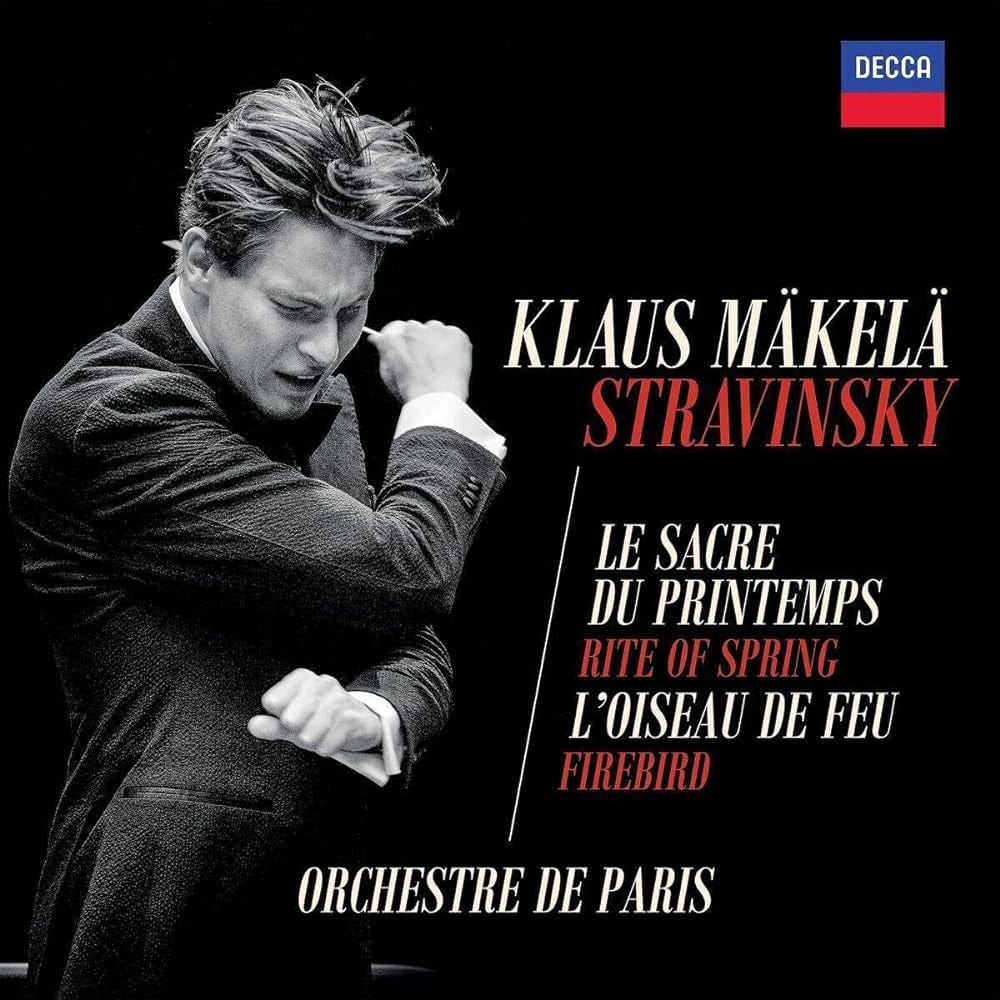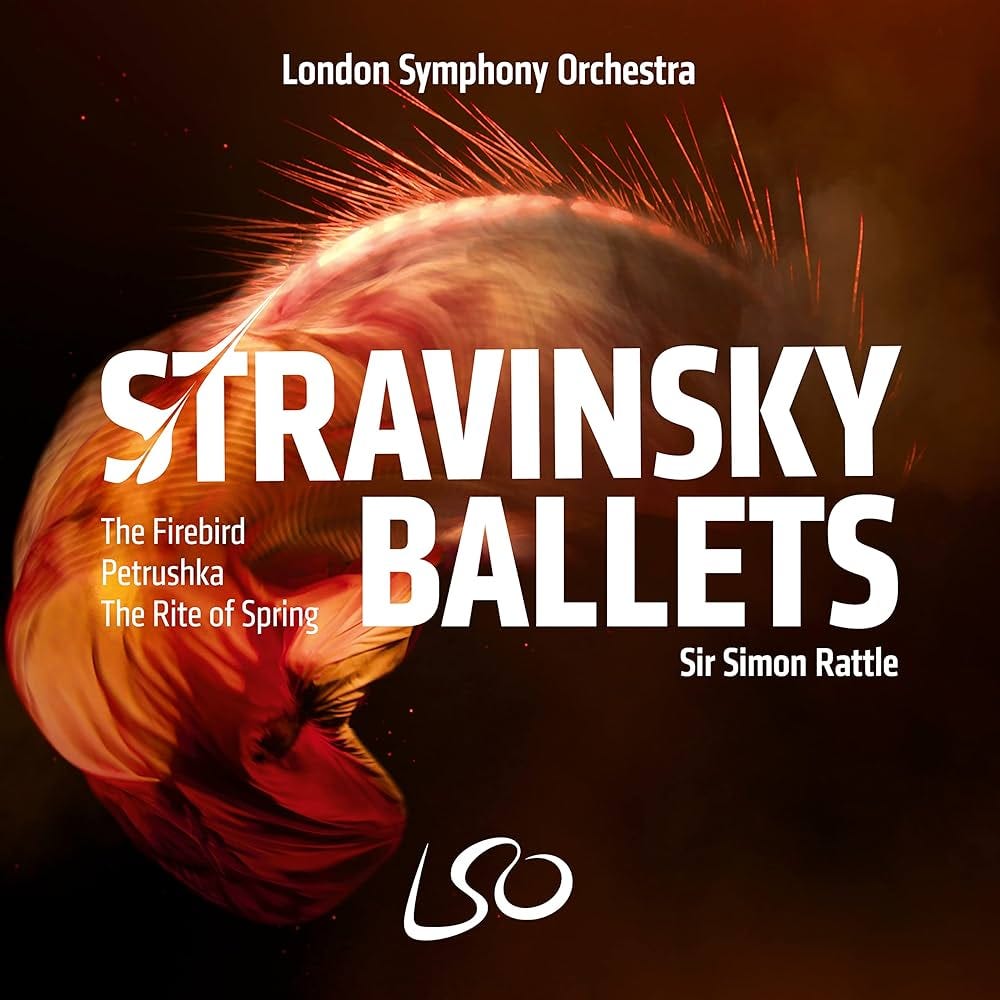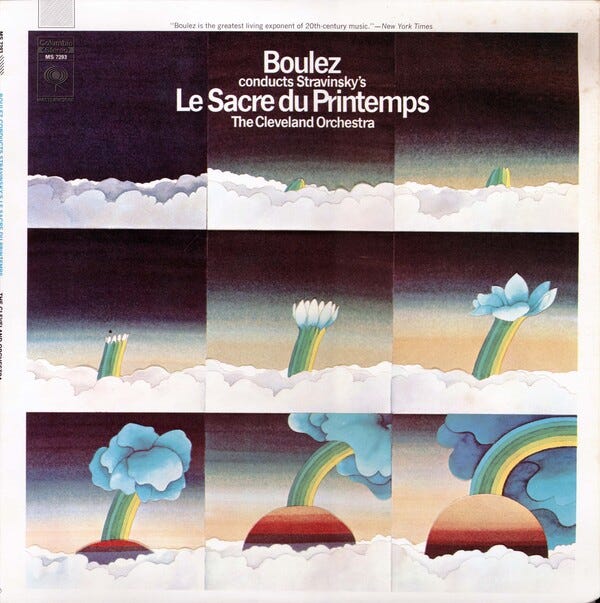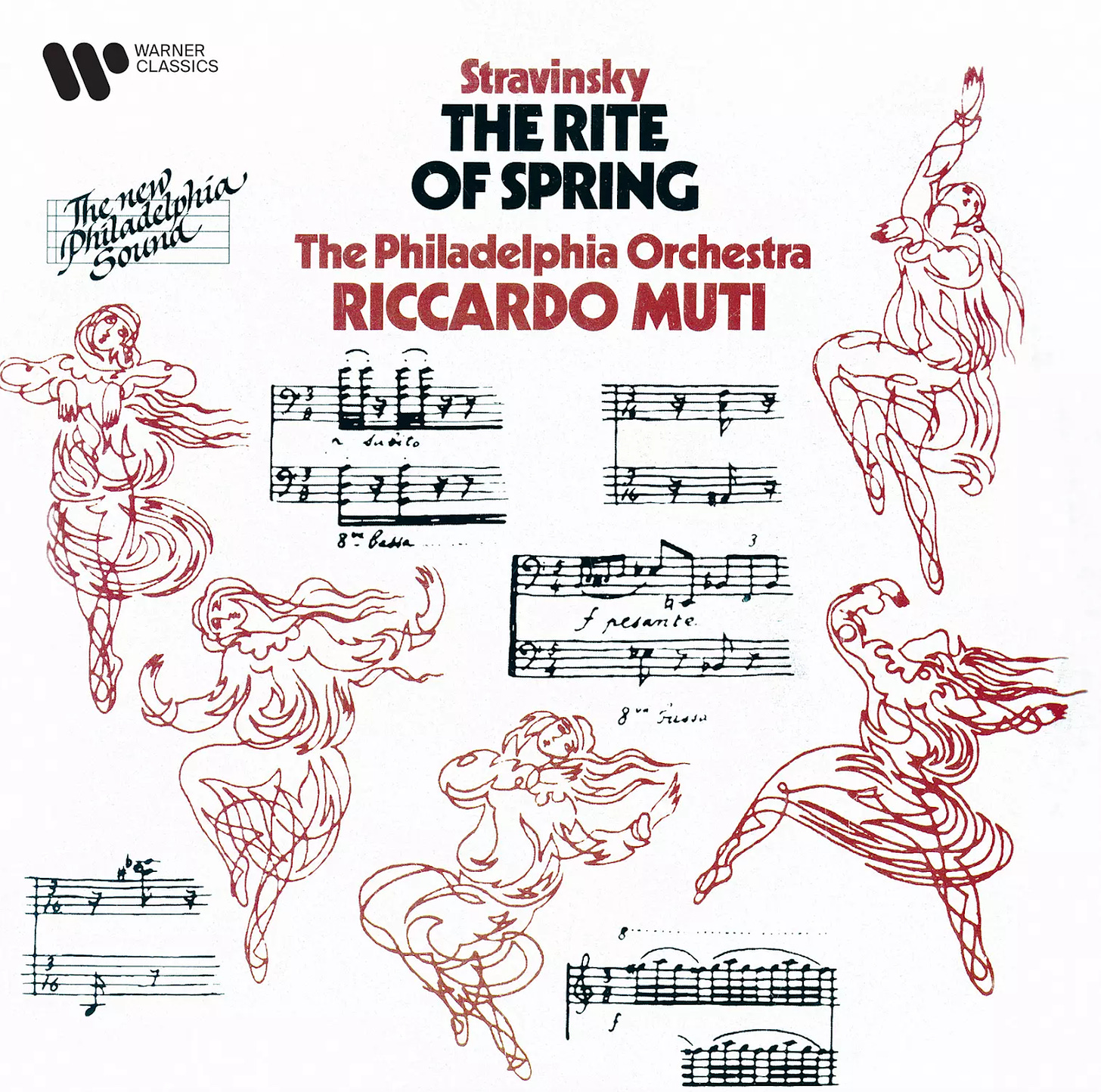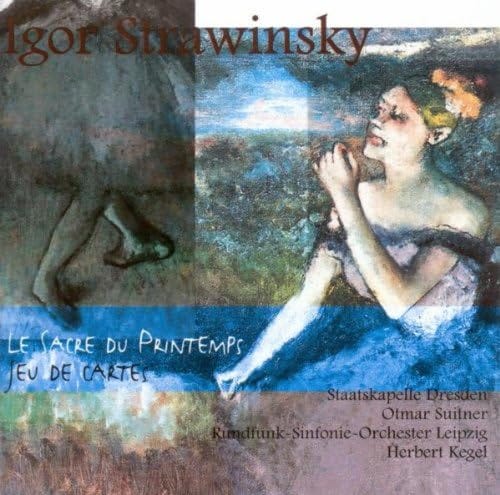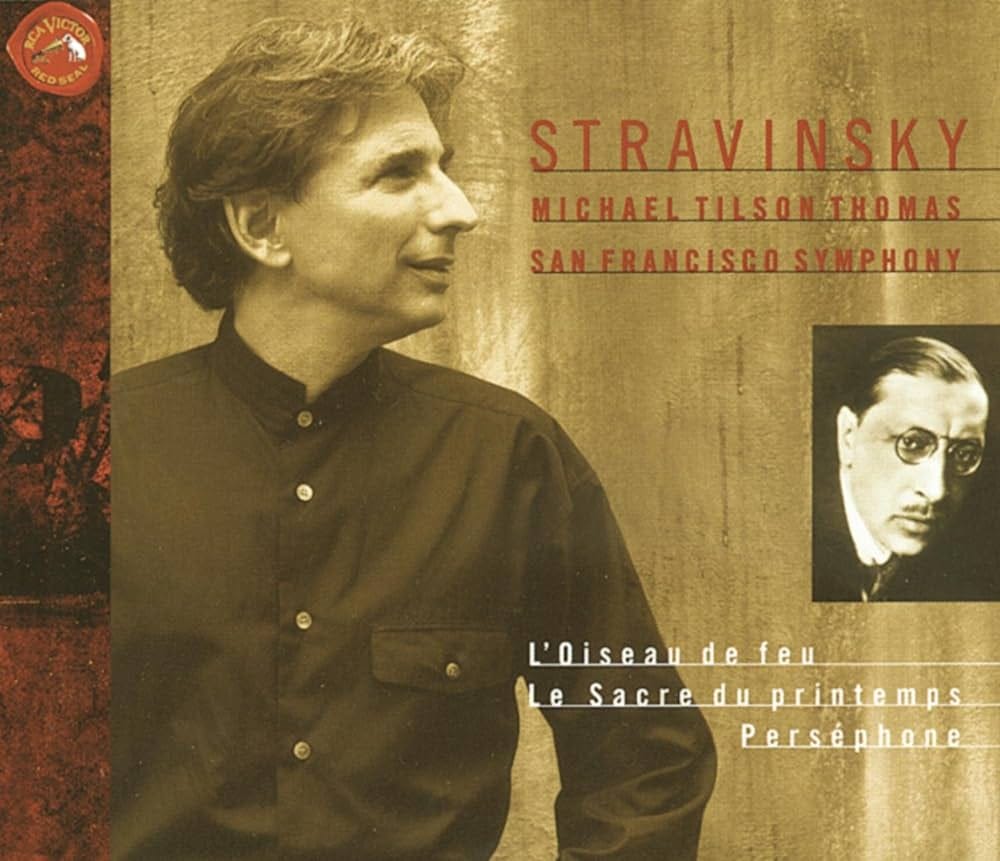Very few works in classical music have sufficiently made it into the public conscience. Beethoven’s Fifth, Beethoven’s Ninth, Mozart’s Eine Kleine Nachtmusik, and Vivaldi’s Four Seasons; the list is relatively short. None more interesting, though, than The Rite of Spring by Igor Stravinsky. Originally written for Sergei Diaghilev’s Ballet Russes with original choreography by Vaslav Nijinsky, the story of its premiere is infamous. Conducted by the great French conductor Pierre Monteux, there were riots, fights, and all sorts of interruptions. However, first I must dispel a common misconception: the interruptions and harsh reactions were not towards the music, they were towards the choreography. If you look at it, you’ll quickly understand why. I don’t think the highbrow bourgeois Parisian audiences were too keen on watching pagans dance themselves to death in rural Russia. When the work was first performed as a solely orchestral piece without choreography, it was a grand success and entered the standard repertoire fairly quickly, being recognized as one of the supreme masterpieces of twentieth-century music and the mark of a true and completely original genius.
The Rite of Spring’s driving rhythms, complex tonalities, and emotional intensity make it an incredibly popular work with the public, so every conductor worth their salt has recorded it at least once. While I was doing research for this article, I realized that much to my surprise, the great or very good recordings of the piece far outnumber the lousy ones. In a work of such difficulty, you would expect it to be the other way around. I’m writing here fairly casually a list of some great recordings, some really lousy recordings, and everything in between. So without further ado, let’s get going.
The Worst Recordings
No. 1: Klaus Mäkelä & the Orchestre de Paris (Decca, 2023)
By far the worst recording that I listened to while doing this survey was a newcomer: Klaus Mäkelä with the Orchestre de Paris. Mäkelä is the new 28-year-old hotshot conductor from Finland who had the Oslo Philharmonic and the Orchestre de Paris and is now slated to take over the Chicago Symphony next year and the Royal Concertgebouw Orchestra in 2027. He is a horrible conductor, both in person and on disc. His debut recording (the complete Sibelius Symphonies with the Oslo Philharmonic on Decca) was horrid and showed an inexperienced guy with no interpretive depth or insight who needs to spend another 20 years learning to conduct before stepping in front of a first-rate orchestra, let alone make a recording with them.
The problem with Mäkelä’s Stravinsky is very clear: he has no balls. It’s castrated Stravinsky. It’s clean, lacks any rhythmic fervor or dirtiness (in a ballet about pagans dancing themselves to death), and is sloppily played in places. Take a listen to the sacrificial dance, which has about the same intensity as a relaxing day on a beach. It doesn’t help that it’s poorly recorded too. Oh, and his new Stravinsky and Debussy recordings with the same orchestra? They also suck. If you see the words “Mäkelä” and “Stravinsky” on a recording, run, don’t walk away from it.
No. 2: Simon Rattle with any orchestra that he has recorded this with
Boring. Flat-footed. Sloppy. Not worth your time. The ending is so anticlimactic it’s the equivalent of musical blue balls. He recorded it three times and got it wrong every time. Who deserves to make a recording of any work three times?
No. 3: Herbert von Karajan & the Berlin Philharmonic (Deutsche Grammophon, 1964)
Oh my god is Karajan not a Stravinsky conductor. His whole approach to orchestral sound (which is to make the string section sound so pretty and thick at the expense of hearing any of the woodwinds 99% of the time, and have very soft-sounding percussion) is extremely antithetical to what Stravinsky wanted. This is the performance that Stravinsky famously said was in a “tempo di hoochie-coochie,” “a pet savage rather than a real one,” and “duller than Disney’s dying Dinosaurs.” It completely lacks any of the edge, excitement, and ferocity that you would want from a piece like this. As expected with Karajan and the Berlin Phil, the playing is beautiful, so at least it’s not sloppy. Just wrong.
Those are the awful ones. Some other bad ones include Stravinsky’s recording with the Columbia Symphony Orchestra, Valery Gergiev's with the Mariinsky Orchestra (which might be the worst of them all), Teodor Currentzis’ with MusicAeterna, and Pierre Monteux’s Grand Orchestre Symphonique (which is the first of three recordings that he made.)
The Great Recordings
As I said previously, this work has done very well on disc. There are many, many, great recordings, and it will be hard for me to choose a limited number. But these should give you a good idea of what the piece is supposed to sound like, and what the recordings are.
No. 1: Pierre Boulez & the Cleveland Orchestra (Columbia-Sony, 1970)
This is the reference recording of the piece. Any discussion of the discographic history of the piece must include this recording, and rightly so. The rhythms are razor-sharp, the orchestral textures are super transparent, and the playing of the Cleveland Orchestra is amazing. It’s pounding, percussive, and balletic in a strange way, all while being faithful to what Stravinsky wrote and the character of the music. It’s perfect for Boulez’s style of conducting. A fun story is that when Boulez arrived for the recording sessions, the members of the Cleveland Orchestra were expecting a typical recording session, with lots of cuts, stops, and re-recordings. But they quickly realized when they started playing that Boulez was not going to stop until he had a complete performance of the piece. This is one of the days that everything went right. For first-time listeners, I wholeheartedly recommend this recording. After listening to this, it should be no surprise that the nickname bestowed on Boulez by the New York Philharmonic was “the French Correction.”
It should also be noted that Boulez made another recording of this piece with the Cleveland Orchestra for Deutsche Grammophon, and while that one is not bad in the slightest, this one is the superior version.
No. 2: Riccardo Muti & the Philadelphia Orchestra (EMI-Warner, 1978)
This is one of the first recordings that Riccardo Muti made around when he took over the Philadelphia Orchestra after Eugene Ormandy had retired. When this came out, everyone was shocked. People had gotten used to Ormandy’s beautiful orchestral sonority, and I don’t think anyone expected the Philadelphia Orchestra to play with this much rawness, fervor, and intensity, and done with their classic incredible playing. This is one of my favorite recordings of the piece, for its craziness, drive, and overall conception. The rhythms aren’t as sharp and perfectly articulated as in Boulez’s Cleveland recording, but I think this is just more intense and exciting. There has never been a more exciting Augurs of Spring, and to me, this is still one of my personal favorites and undoubtedly one of Muti’s great (perhaps his greatest) recordings.
No. 3: Otmar Suitner & Staatskapelle Dresden (Whatever label you can find it on)
The Staatskapelle Dresden is Germany’s greatest orchestra, bar none. Move over Berlin Philharmonic, they don’t hold a candle to them. Their sound is so characterful, sometimes gruff, and virtuosic without being sloppy. Their winds have an incredibly distinct rawness and use of vibrato (similar to the Czech Philharmonic) while their strings are lean, mean, and hair-raising. The thing that’s interesting about this is that at the time that this recording was made, this music was very much not in the core repertoire of the Staatskapelle Dresden. But they went for this piece, and by god does it sound like it. They are working very hard and the struggle adds to the music by giving it an extra layer of tension. Another personal favorite, and a highlight of Otmar Suitner’s discography.
No. 4: Michael Tilson Thomas & the San Francisco Symphony (RCA-Sony)
MTT is and was a great Stravinsky conductor, and he kept the San Francisco Symphony in amazing shape, as evidenced by this recording. His style of Stravinsky conducting is very much similar to Boulez’s, in the sense that it’s a little cooler, but still incredibly sharp, disciplined, and rhythmically amazing, all the while maintaining incredible orchestral clarity and differences of emotion. He’s a little warmer than Boulez is, but that shouldn’t deter you from listening to this recording. The San Francisco Symphony plays beautifully, and this shows what a sympathetic Stravinsky conductor MTT is.
Sofia, you should be happy that your hometown team made the list.
No. 5: Leonard Bernstein & the New York Philharmonic (Columbia-Sony)
For my money, this is the greatest recording of the Rite of Spring by the twentieth-century’s greatest Stravinsky conductor. The New York Philharmonic wasn’t the most polished orchestra at the time of this recording, but it doesn’t matter. This is the most intense and intelligent Rite of Spring out there, even if not the best played. Even Stravinsky himself loved this performance. One example that stood out upon my first listen was the way that Bernstein gradually slows down the sacrificial dance at the end to make it slower and heavier before taking off like a slingshot (which isn’t exactly what Stravinsky wrote but works very well). Bernstein got this piece, and even though he recorded it twice more, this is still the best of the bunch and one of Bernstein’s greatest recordings. I know no other performance that excites me like this one with the possible exception of Muti’s with Philadelphia. After familiarizing yourself with the Boulez recording, run and get this one. It is the most electrifying and exciting Rite of Spring on the market.
This should be a good place for you to get started on your Rite of Spring journey, and I hope you enjoy the piece as much as I do. Have fun listening!

